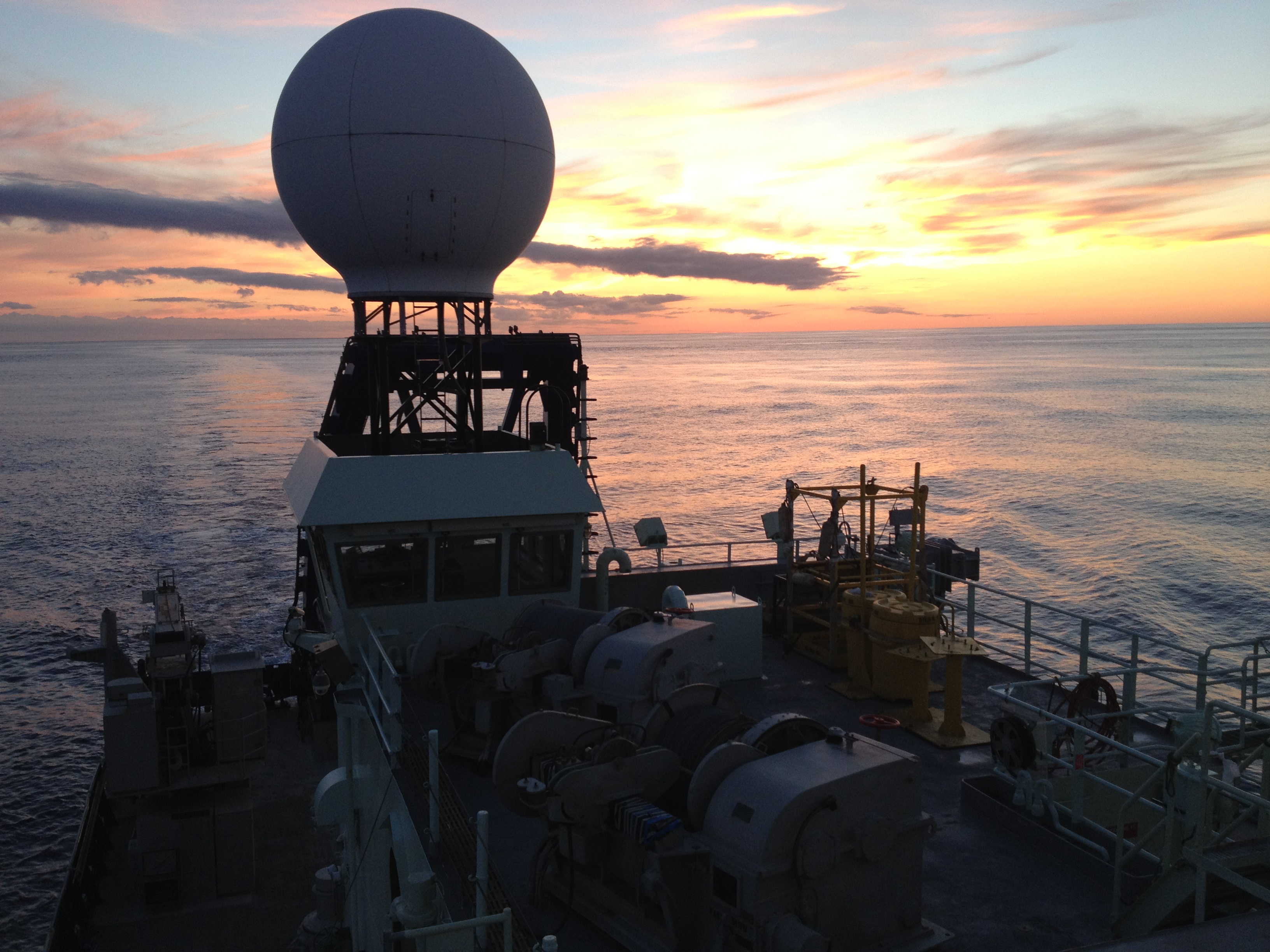
The U.S. and Canada have been surveying in the northern Atlantic Ocean this summer, gathering data to support both countries’ territorial claims under the United Nations Convention on the Law of the Sea (UNCLOS). The survey project started on August 15, and the ship is scheduled to return to Woods Hole, Massachusetts, on September 10.
Lt. Briana Welton, a NOAA Corps officer, is representing the Office of Coast Survey and the NOAA-University of New Hampshire Joint Hydrographic Center, as the team of eight Canadian and U.S. hydrographers and geologists work onboard the University-National Oceanographic Laboratory System’s Research Vessel Atlantis. (The Woods Hole Oceanographic Institution operates the Atlantis).

The survey team has been mapping the North Atlantic Continental Slope on the Canadian side of the Hague Line, acquiring multibeam, sub-bottom profiler, magnetic, and gravity data. (Check out Where is Atlantis Now?, for a great map of their cruise.)
The national effort to establish the full extent of the continental shelf is vital to the U.S. economy, as the ocean shelf has energy and mineral resources likely worth many billions of dollars. The process for extending the shelf is outlined by the U.S. Extended Continental Shelf Project:
Under international law, as reflected in the Convention on the Law of the Sea, every coastal State [country] automatically has a continental shelf out to 200 nautical miles (nm) from its coastal baselines, or out to a maritime boundary with another coastal State. However, a coastal State may define a continental shelf beyond 200 nm (called an extended continental shelf), if it meets the criteria outlined in Article 76 of the Convention. The process requires the collection and analysis of data that documents the natural prolongation of the continental landmass beyond 200 nm as determined by the formulae and limit lines in Article 76.
NOAA is one of the U.S. agencies leading the effort to collect the data that would allow our Nation to extend the shelf.


Excelente trabajo! Esperamos la publicaciòn cartográfica y batimétrica. Buen trabajo en conjunto.